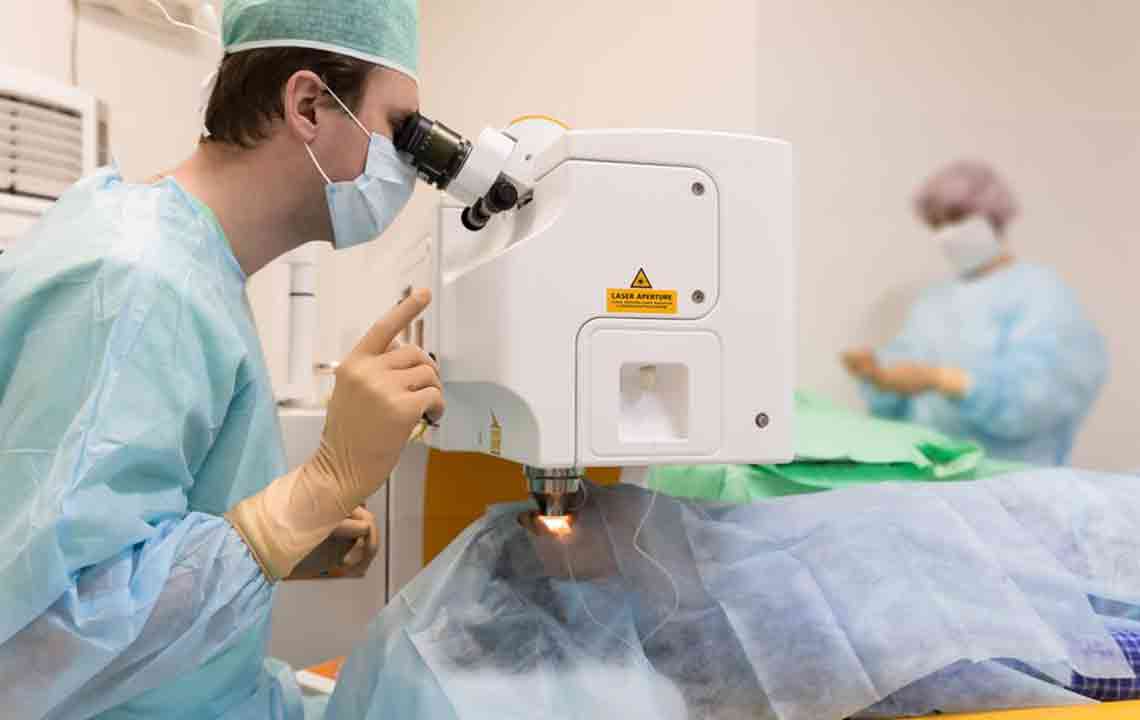All You Need to Know About Laser Cataract Surgery Costs
Cataract is the clouding of the eye’s natural lens, which lies behind the iris and the pupil. The well-defined arrangement of protein inside the lens keeps it clear and allows the light to pass through it. However, due to aging the protein in the lens sometimes tends to clump together and blocks a small area of the lens. A person with a cataract can experience the symptoms depending on the type of cataract they have. Usually, it starts out tiny and has minimal effect on the vision, but as time passes, it tends to blur the sight. People suffering from cataract find sunlight and other sources of bright light disturbing.

Traditional approach v/s laser cataract surgery
Treatment of cataract involves removing the clouded natural lens of the eye and replacing it with a clearer synthetic lens. In traditional surgeries, patients require general anesthesia, sutures, and more than a month of recovery time.
Laser cataract surgery cost
The cost of laser operations varies from patient to patient. The laser cataract surgery cost per eye can fall between $1500 to $3000. The kind of technology used by the surgeon, condition of the eye, overall health are some primary determinants of the price for the cataract laser surgery.
Bladeless surgeries include corneal flap made up of a femtosecond laser instead of a microkeratome and requires a patient to shell around $200 more per eye than the average surgery cost. However, the pricing rises in case of custom laser procedure that uses wavefront technology for precise vision correction. Eye doctors typically offer either a one-year assurance plan or a conditional lifetime plan. Both have distinctive price structures.
How insurance affects your laser cataract surgery cost?
Commonly, the laser cataract surgery cost is covered by Medicare or private medical insurance as most patients are above 60 years. With increasing demand, various financial institutions offer specialized packages in elective surgical procedures like LASIK and offer plans with fixed rates and long-term payments. However, the ratio of the amount paid by the insurance companies for the procedure, and the portion of the cost that must be paid “out-of-pocket” by the patient varies widely. It mainly depends on the deductible of the insurance policy, the type of intraocular lens (IOL) used for the procedure, and other factors.
In cases where a person is without a Medicare or private medical insurance, the entire laser cataract surgery cost needs to be borne by the patient. The cost of the procedure here varies widely depending upon market conditions and the fee schedule adopted by the surgeon for a no-insurance, direct-pay scenario.
Inquires you need to make with your insurance provider
An in-depth discussion with your insurance provider or Medicare representative before cataract surgery is imperative to provide you with a clear understanding of the laser cataract surgery cost. This will clear the air over how much cost is covered and how much out-pocket expenses you ultimately need to pay as terms and conditions vary for different providers. Here are some critical aspects you need to focus on:
- Seek clarification over co-pay.
- Inquire about deductibles. A high annual deductible for the insurance coverage keeps the monthly fees low.
- Ask if the coverage plan pays for eyeglasses.
- Inquire if your cataract surgeon has a special arrangement as a preferred provider with the insurance company.
- The surgical centers that are approved by your insurance carrier.
- Insurance company policies like the requirement of approval in advance to validate that a cataract procedure is medically necessary.
How to manage laser cataract surgery cost?
Here are some ways with which you can reduce your laser cataract surgery cost:
- Choosing Flexible Spending Account (FSA) to pay for laser eye surgery is prudent. In this way, you can channel your pre-tax salary into an account for out-of-pocket health care, if your employer allows so.
- You can also set tax-free money in a Health Savings Account (HSA) to pay for the laser surgery. This however requires that the patient is covered by a high-deductible health plan (HDHP) at work. Make tax-free contributions to your HSA each pay period because unspent money in HSA tends to be carried forward at the end of the year so you can use it the following year or sometime in the future.

